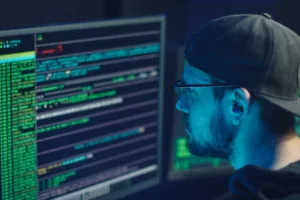Major events, such as international sporting competitions, cultural festivals, and large-scale conferences, are increasingly becoming targets for cyberattacks. With billions of dollars at stake and sensitive data on the line, the need for robust cybersecurity measures has never been more critical. This article explores the cybersecurity challenges associated with major events, the evolving threat landscape, and actionable steps for organizations to mitigate risks.
Key Takeaways
- Cyber Threats: Major events are prime targets for cybercriminals, hacktivists, and state-sponsored actors.
- Common Tactics: Phishing, ransomware, DDoS attacks, and business email compromise (BEC) are frequently employed.
- High-Profile Incidents: Examples include attacks on the 2016 Rio Olympics and the 2022 Beijing Winter Olympics.
- Mitigation Strategies: Implement strong cybersecurity hygiene, conduct regular threat assessments, and leverage AI for proactive defense.
- Relevance to Red/Blue Teams: Focus on threat hunting, incident response, and securing event-related infrastructure.
The Cybersecurity Challenges of Major Events
Major events attract global attention, making them lucrative targets for cybercriminals. According to the European Union Agency for Cybersecurity (ENISA), the threat landscape for such events includes ransomware, distributed denial-of-service (DDoS) attacks, and sophisticated phishing campaigns. Hacktivists also exploit these events to promote their agendas, often targeting event websites and infrastructure to cause disruption.
High-Profile Incidents
- 2016 Rio Olympics: Hacktivist group “Anonymous” launched DDoS attacks on Brazilian government websites and sporting organizations.
- 2022 Beijing Winter Olympics: The MY2022 mobile app, required for attendees, was found to have weak encryption, exposing sensitive user data.
- 2024 Paris Olympics: With the legalization of AI surveillance in France, concerns about data privacy and cyber threats have escalated.
Technical Insights for Red and Blue Teams
Threat Hunting and Incident Response
For Red Teams, major events provide an opportunity to simulate real-world attack scenarios. Key areas to focus on include:
- Phishing Campaigns: Test the resilience of event organizers and attendees against phishing attempts.
- Ransomware Simulations: Assess the organization’s ability to detect and respond to ransomware attacks.
- DDoS Mitigation: Evaluate the effectiveness of DDoS protection mechanisms.
Blue Teams should prioritize:
- Threat Intelligence: Leverage tools like ENISA’s Threat Landscape Report to stay informed about emerging threats.
- Incident Response Plans: Develop and test response plans for potential cyber incidents during the event.
- AI-Powered Defense: Use AI to detect anomalies in network traffic and identify potential threats in real-time.
Proof of Concept: Detecting Phishing Attempts
Here’s a Python script to analyze email headers for potential phishing attempts:
import re
def detect_phishing(email_header):
suspicious_keywords = ["urgent", "password", "verify", "account", "login"]
phishing_score = 0
for keyword in suspicious_keywords:
if re.search(keyword, email_header, re.IGNORECASE):
phishing_score += 1
if phishing_score >= 3:
return "Potential phishing attempt detected."
else:
return "No phishing attempt detected."
# Example usage
email_header = "URGENT: Verify your account to avoid suspension."
print(detect_phishing(email_header))Relevance to the Target Audience
For Red Teamers, major events are a playground for testing offensive tactics and identifying vulnerabilities. Blue Teamers and SOC Analysts must focus on proactive defense and rapid incident response. Threat Intel Researchers should monitor emerging trends, such as AI-enabled disinformation campaigns and supply chain attacks. System Administrators play a critical role in securing event infrastructure, including cloud-based systems and IoT devices.
Mitigation Strategies
- Implement Strong Cyber Hygiene: Use multi-factor authentication, update software regularly, and educate staff about phishing risks.
- Conduct Regular Threat Assessments: Use frameworks like ENISA’s Threat Landscape to identify and address vulnerabilities.
- Leverage AI and Automation: Deploy AI tools to monitor network traffic and detect anomalies in real-time.
- Collaborate with Stakeholders: Work with government agencies, cybersecurity firms, and event organizers to share threat intelligence and best practices.
Conclusion
As major events continue to grow in scale and complexity, so do the cybersecurity risks associated with them. By understanding the threat landscape and implementing robust mitigation strategies, organizations can protect their assets, reputation, and attendees from cyber threats. The collaboration between Red Teams, Blue Teams, and other cybersecurity professionals will be crucial in ensuring the success and security of these events.




